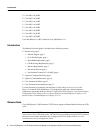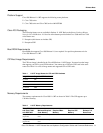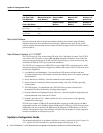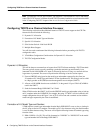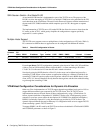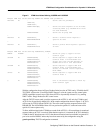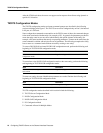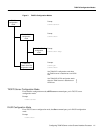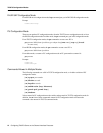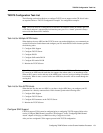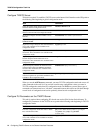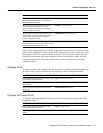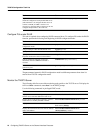
Configuring TN3270 Server on the Channel Interface Processor 5
Cisco’s Implementation of TN3270 on a Channel Interface Processor
Configuring TN3270 Server on the Channel
Interface Processor
This chapter describes TN3270 server support provided by the Channel Interface Processor (CIP)
card forSystems Network Architecture(SNA)devices. For acomplete description ofthe commands
mentioned in this chapter, refer to the “TN3270 Server Commands” update chapter.
Cisco’s Implementation of TN3270 on a Channel Interface Processor
The TN3270 server feature on a CIP card provides mapping between an SNA 3270 host and a
TN3270 clientconnected toa TCP/IPnetworkas shownin Figure 1.Functionally,it isuseful toview
the TN3270 server from two different perspectives: SNA functions and Telnet Server functions.
• SNA Functions
From the perspective of an SNA 3270 host connected to the CIP, the TN3270 server is an SNA
device that supports multiple physical units (PUs), with each PU supporting up to 255 logical
units (LUs). The LU can be Type 1, 2, or 3. The SNA host is unaware of the existence of the
TCP/IP extension on the implementation of these LUs.
The LUs implemented by TN3270 server are dependent LUs. To route these dependent LU
sessions to multiple virtual telecommunications access method (VTAM) hosts connected to the
server in the CIP card, rather than routing in the VTAM hosts, the TN3270 server implements a
SNA session switch with end node dependent LU requester (DLUR) function. Using the DLUR
is optionalsothat theTN3270 server canbeused withVTAM versionsprior toversion4.2, which
provide no APPN support.
SNA session switch allows you to eliminate SNA subarea routing between hosts of TN3270
traffic by establishing APPN links with the primary LU hosts directly.
• Telnet Server Functions
From the perspective of a TN3270 client, the TN3270 server is a Telnet server that can support
approximately 8000 (CIP1) or 16000 (CIP2) concurrent Telnet sessions. The server on the CIP
card supports Telnet connection negotiation and data format as specified in RFC 1576 (referred
to as “traditional TN3270”) and RFC 1647 (referred to as “TN3270E”).
Figure 1 TN3270 Implementation
Because the TN3270 server configuration is performed after an interface is configured for CIP SNA
(CSNA) support, TN3270 configurationissues and tasksare addressed separatelyfrom the interface
configuration tasks. The description of TN3270 configuration issues and tasks begins in the section
“Configuring TN3270 on a Channel Interface Processor,” later in this chapter.
Router Router
Token
Ring
SNA TCP/IP
TN3270
client
S4735




